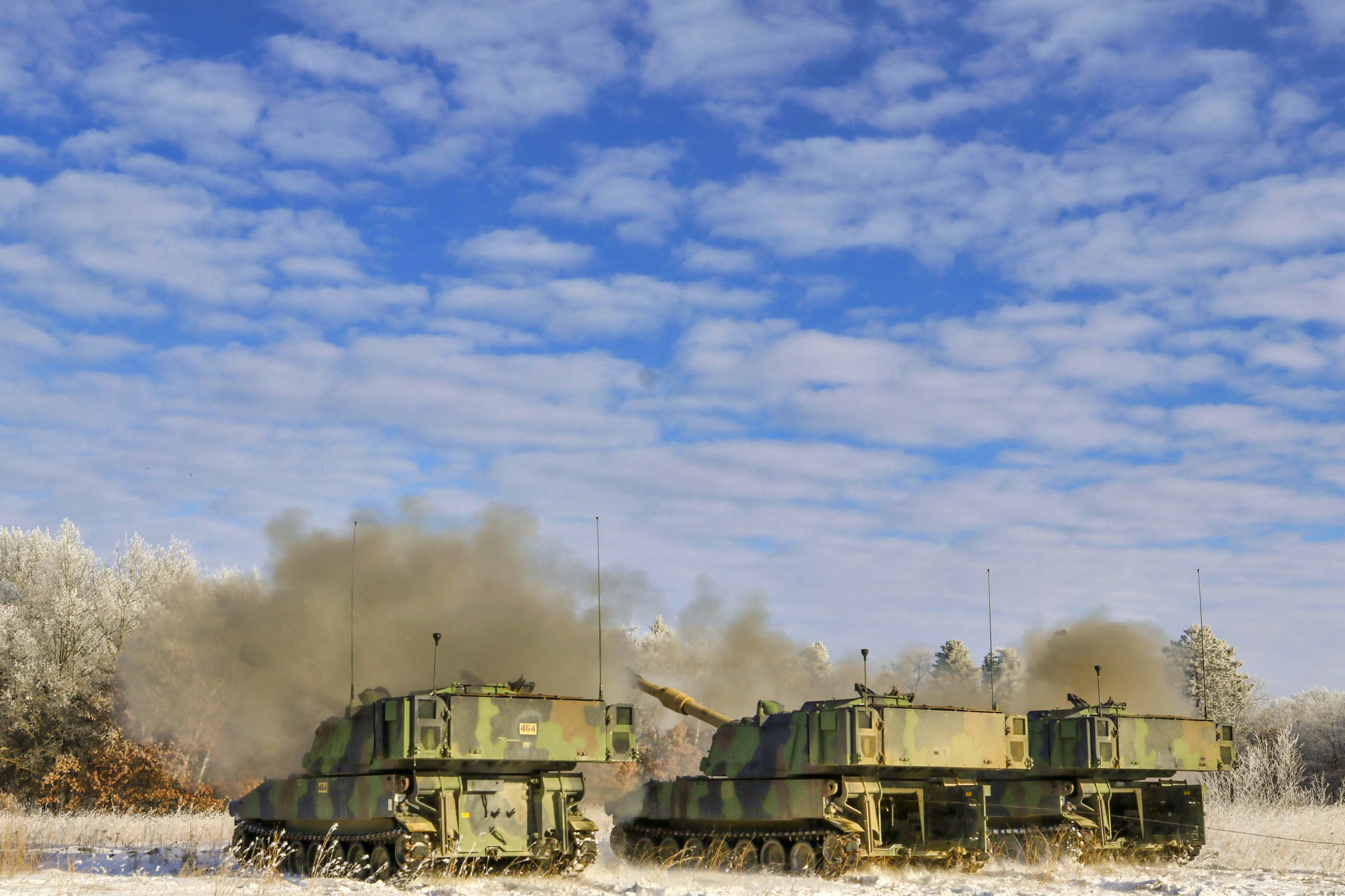The U.S. Army is evaluating an improved version of M109A6 Paladin self-propelled howitzers on Camp Ripley Training Center.
U.S. Army Soldiers assigned to 1st Battalion 125th Field Artillery host a live-fire demonstration with their M109A6 Paladins to validate upgrades to the unit’s howitzers, Jan. 9, 2021, on Camp Ripley, according to a recent service news release.
The 155mm M109 self-propelled howitzers were first introduced in 1962, as a form of armored mobile artillery that could stand up to the massed fire tactics of Soviet heavy artillery and rockets. They and their companion M992 Armored Ammunition Resupply Vehicles have been rebuilt and upgraded several times to comply with the current requirements.
The Paladin 155mm self-propelled howitzer manufactured by BAE Systems is a significant upgrade to the M109 cannon artillery system.
Paladin features an automatic fire control system, navigation system, NBC protection with climate control, hydraulics system segregation and secure voice and digital communications.
Hull, turret, suspension and automotive system upgrades extend Mean Time Between Failures by almost two-thirds, increasing reliability. This equals a 40 percent rise in operational availability. Mean Time To Repair is more than cut in half. An onboard computer pinpoints equipment problems for ease of maintenance.

At the same time, U.S. Army begins fields the new version of Paladin howitzers, called the M109A7.
The M109A7 is the latest howitzer in the BAE Systems M109 family of vehicles, the primary indirect fire support system for the Armored Brigade Combat Teams. It uses the existing main armament and cab structure of a Paladin M109A6, and replaces the vehicle’s chassis components with modem components common to the Bradley vehicle. The improved chassis structure provides greater survivability and commonality with the existing systems in the ABCT, reducing operational sustainability costs by replacing obsolete components.